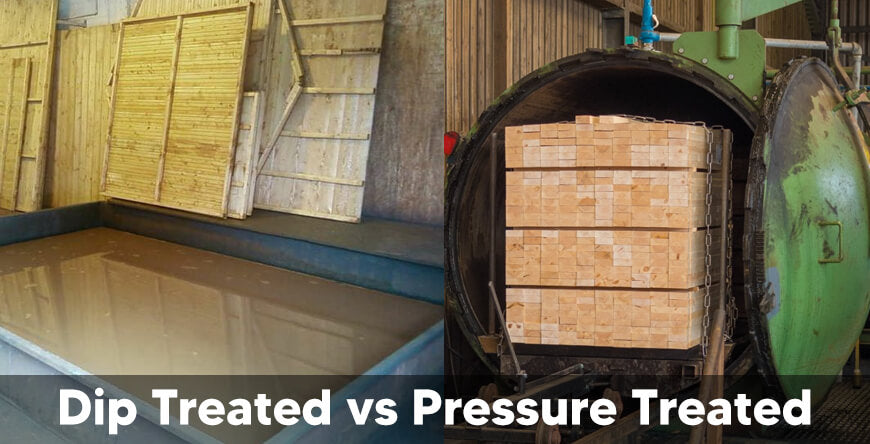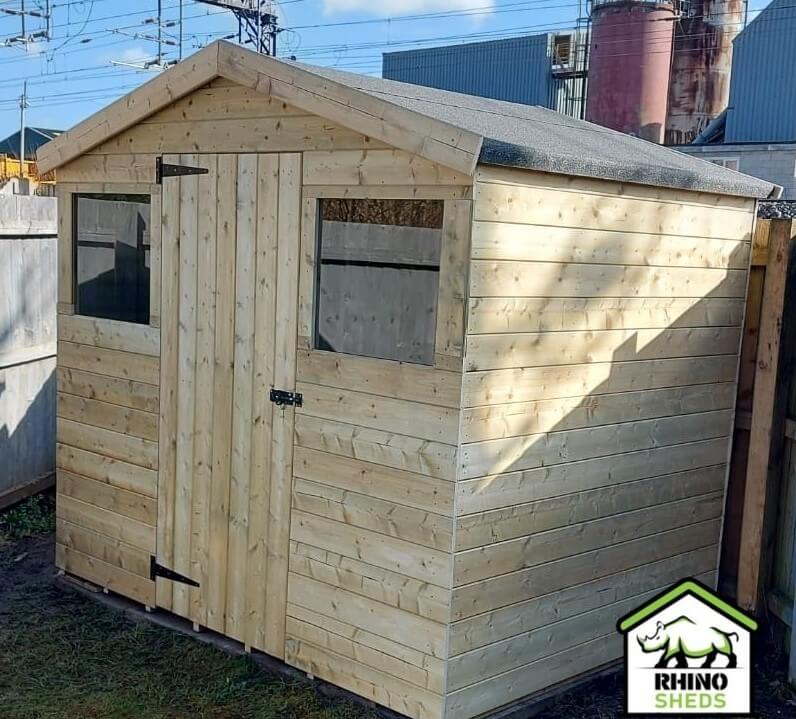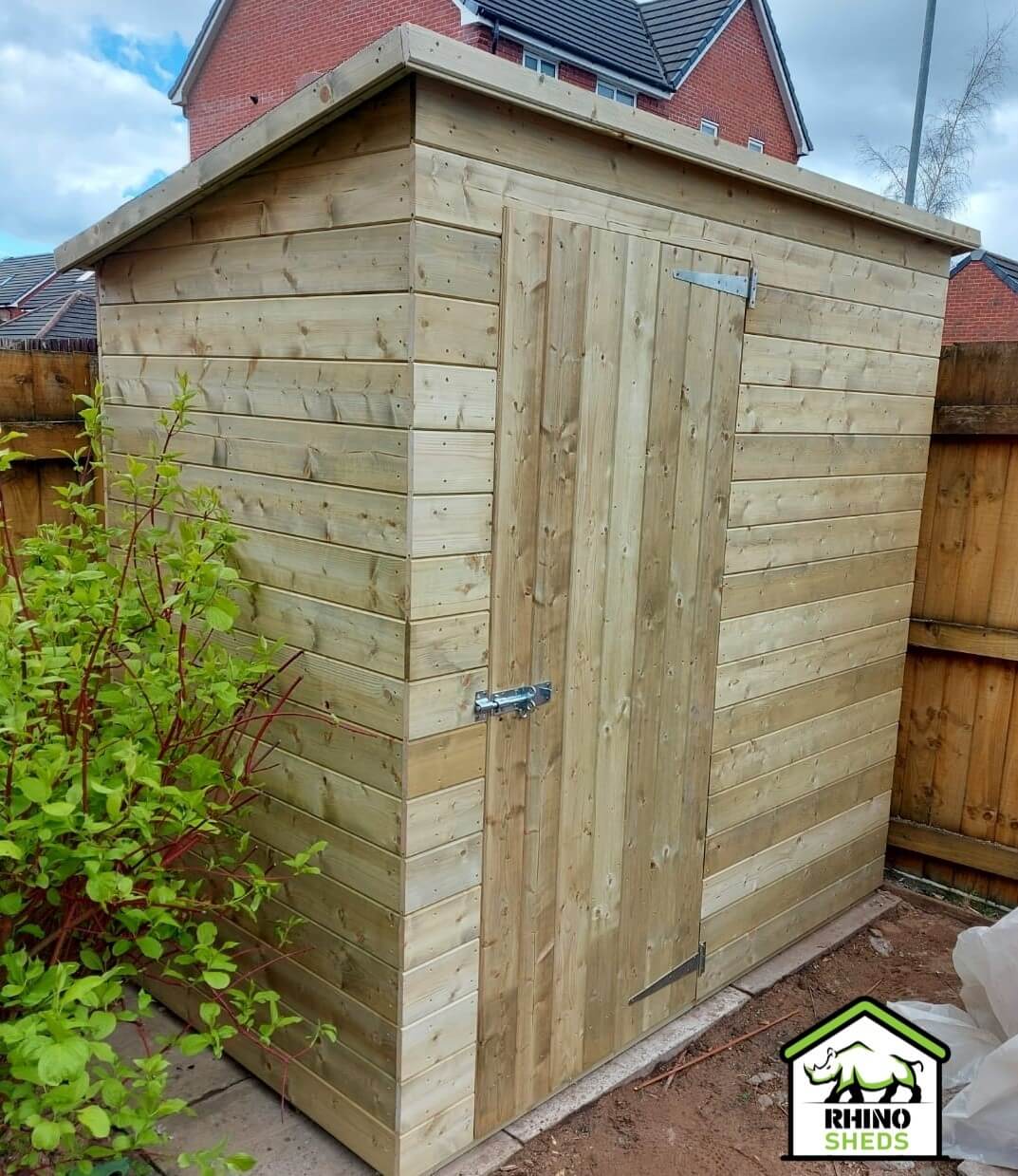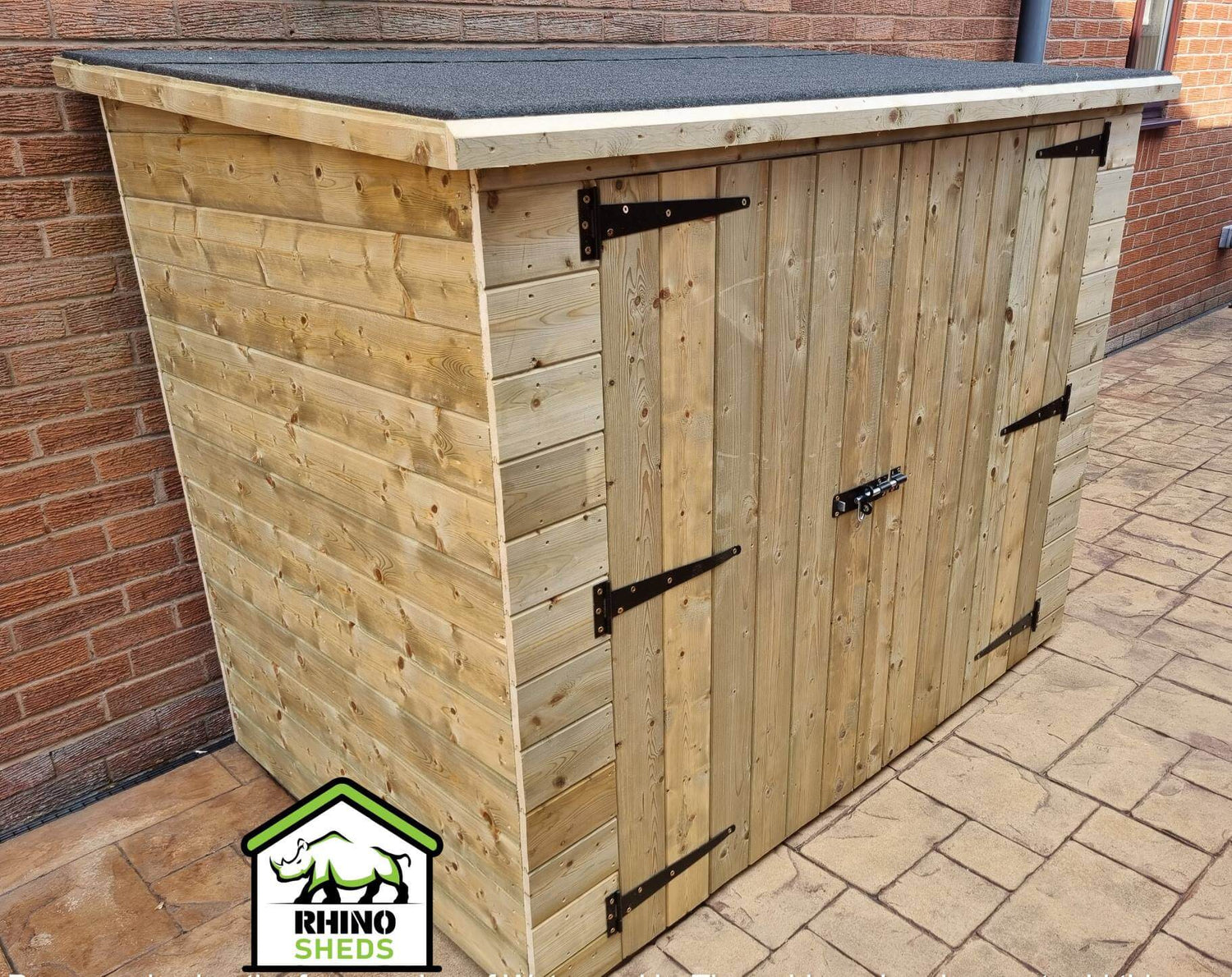As a homeowner, it can be difficult to choose between the different types of sheds available in the market. Two popular options are dip treated sheds and pressure treated sheds. In this article, we will discuss the differences between dip treated sheds and pressure treated sheds to help you make an informed decision for your outdoor storage needs.
Please note at Rhino Sheds, we only use pressure treated timber but we have made this article so that you are aware of the difference between dip treated timber and pressure treated timber.
What is a Dip Treated Shed?
A dip treated shed is a type of shed that has been treated with a wood preservative by dipping it into the preservative. The preservative is absorbed by the wood, which helps protect it from rot and decay. Dip treatment is a quick and cost-effective way to protect wood, but it is not as effective as pressure treatment.
Advantages of Dip Treated Sheds:
- Cost-effective
Disadvantages of Dip Treated Sheds:
- Not as durable as pressure treated sheds
- Requires frequent maintenance and re-treatment
- Susceptible to rot, decay, and insect damage
- Can stain nearby areas if not properly dried
What is a Pressure Treated Shed?
A pressure treated shed is a type of shed that has been treated with a wood preservative under pressure. The preservative is forced into the wood, which helps protect it from rot and decay. Pressure treatment is a more effective way to protect wood than dip treatment, and it is recommended for sheds that will be exposed to the elements.
Advantages of Pressure Treated Sheds:
- Highly durable and long-lasting
- Resistant to rot, decay, and insect damage
- Low maintenance requirements
- Suitable for all weather conditions
- Easier to paint to the colour you wish
Disadvantages of Pressure Treated Sheds:
- Can be more expensive than dip treated sheds
FAQs:
-
Can the dip treatment stain my shed base? If the dip is still damp then it can stain the surrounding areas.
-
How often do I need to re-treat my dip treated shed? Dip treated sheds should be re-treated every 1-2 years to maintain their protective properties.
-
Can I paint or stain a pressure treated shed? Yes, you can paint or stain a pressure treated shed after it has been installed, but it is recommended to wait at least 6 months before doing so.
-
How long do pressure treated sheds last? Pressure treated sheds can last up to 20 years or more with proper maintenance and care.
-
What is the price difference between dip treated sheds and pressure treated sheds? The price difference between dip treated sheds and pressure treated sheds varies depending on the size and style of the shed, but generally, pressure treated sheds are more expensive than dip treated sheds.
Conclusion:
In conclusion, when it comes to choosing between dip treated sheds and pressure treated sheds, it is important to consider your budget, the level of maintenance you are willing to commit to, and the climate in your area. If you are looking for a cost-effective option with a wide range of styles and sizes, dip treated sheds may be a suitable option. However, if you want a shed that is highly durable, resistant to weather and insect damage, and low maintenance, pressure treated sheds are the way to go. Ultimately, the decision comes down to your personal preference and needs.
At Rhino Sheds we only use pressure treated timber, dip treated timber in our opinion can be very messy, doesn't look as good and requires retreatment more often than pressure treated timber. Although pressure treated timber might be slightly more expensive than dip treated timber we are well known for selling affordable sheds that are heavy duty.








